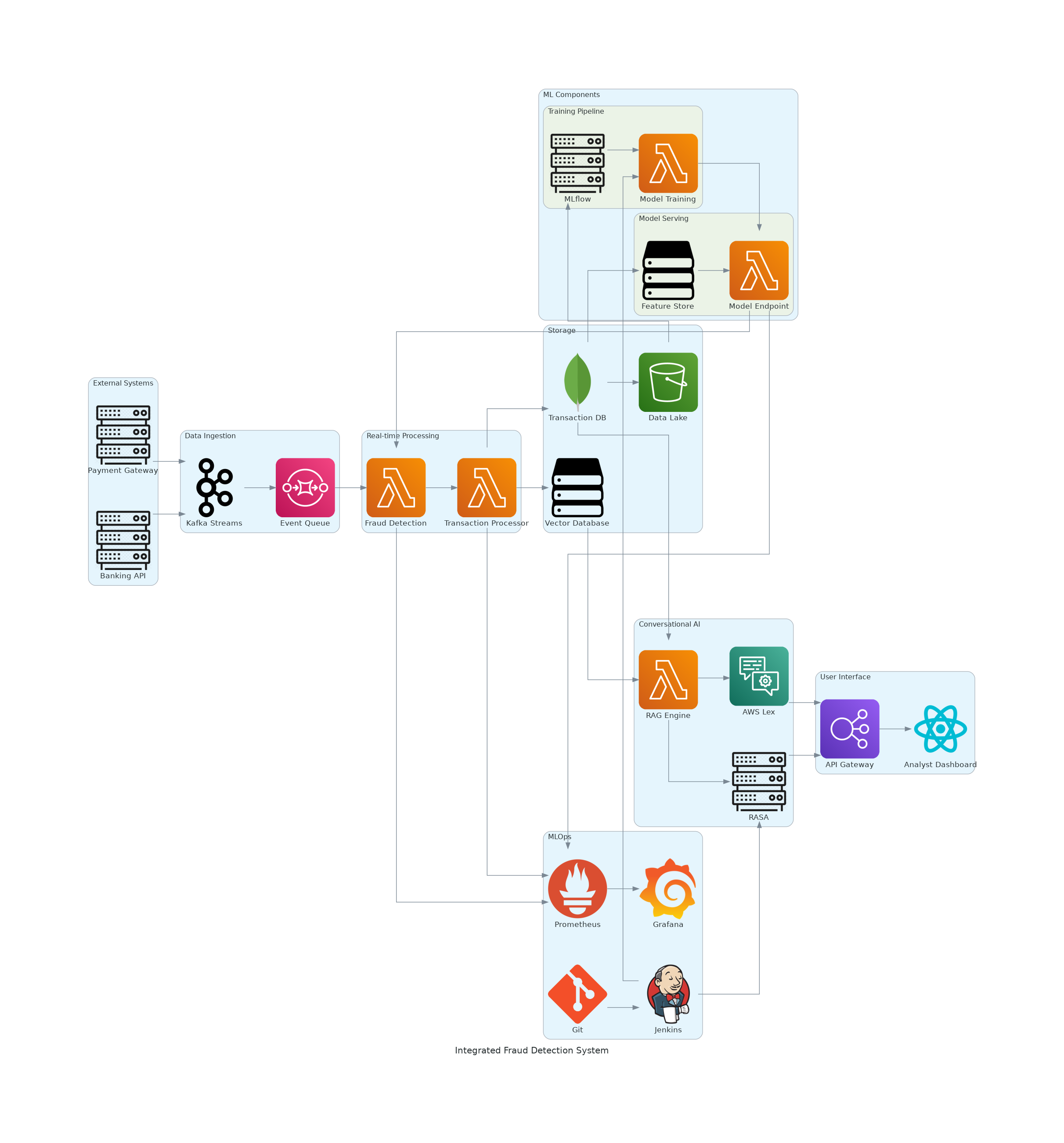Architecture

Architecture Components
- Data Ingestion: Kafka streams for real-time transaction data
- Real-time Processing: Lambda functions for fraud detection
- Storage: Transaction DB, Vector Database, and Data Lake
- ML Components: Training pipeline and model serving
- Conversational AI: RASA, AWS Lex, and RAG Engine
- MLOps: Jenkins, Git, Prometheus, and Grafana
- User Interface: API Gateway and Analyst Dashboard